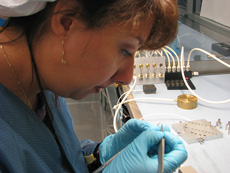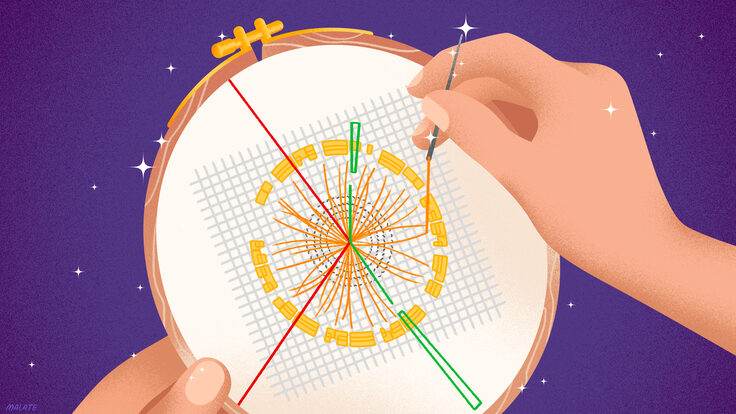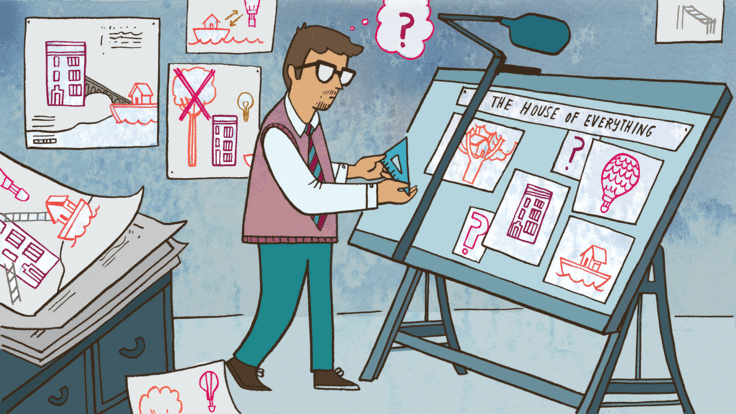With a surgeon's precision, Fermilab technician Michelle Jonas cuts a one-millimeter square of tape that helps hold in place a charge-coupled device, or CCD, which acts like digitized film on a camera. What she is handling is as vital to the dark energy camera as a retina is to the human eye.
Michelle Jonas examines a one-millimeter square of tape.
The dark energy camera, which is being built by Fermilab scientists, will take pictures of the universe back through time, to the Big Bang. The 74 CCDs that will be placed on its lens will record longer wavelengths of light than any previous tool. They will enable scientists to view roughly 300 million galaxies and 60 million stars in the southern hemisphere.
The location and brightness of the stars and galaxies could give scientists clues about dark energy, the mysterious substance thought to make up 70 percent of the universe.
Jonas is the craftswoman behind these delicate silicon devices, each the size of a Matchbox car, and placed on a camera the size of a Mini Cooper. "Michelle is just really good at handling these. It takes some real skill," said Tom Diehl, a physicist who oversees Jonas. "You need super-steady hands and magnifying-glass eyes."
Jonas, who has worked at Fermilab for 12 years, also hones her concentration outside of the office. "No drinking during the week, a clear mind, lots of rest," she said. "I drink my coffee an hour before work so my hands don't shake."
What else helps her stay focused on the nearly 200 steps to the finished product?
"Knowing that I'm working with something that costs $50,000--you don't want to destroy it," Jonas said.
Handling pressure is another one of her skills, said Diehl. "Every time I tell her not to drop one, she just laughs," he said. "She has nerves of steel."
by Kristine Crane
This story first appeared in Fermilab Today.







